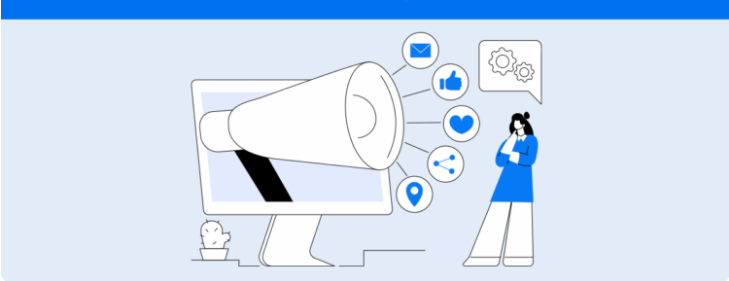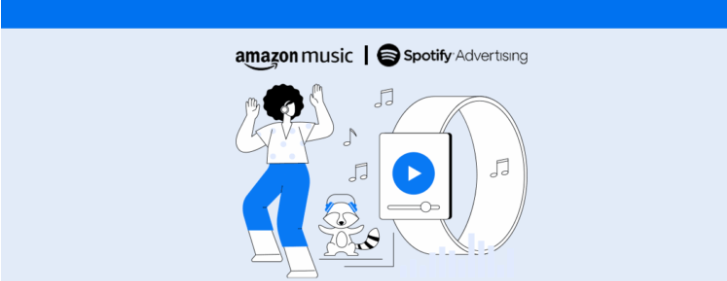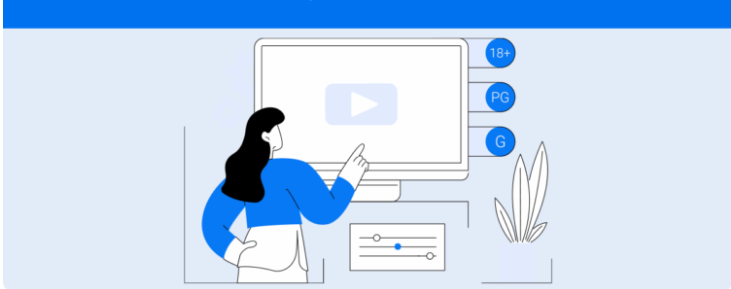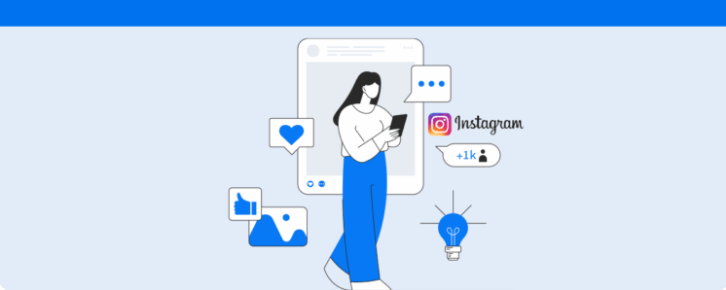Check out the responsibilities of a community manager, examples of routine activities, and the differences from a social media professional.
If you follow brand growth on social networks and see increasingly active communities around their products, you have certainly come across the work of a community manager (CM) even if without realizing it.
More than posting or moderating comments, this professional designs experiences of belonging, creates rituals that make sense for the audience, and translates the voice of the community into the company.
That’s why we have prepared this article to explain what it is, what a community manager does, and what essential skills are needed for the role. Additionally, we provide practical examples of how this profession works. Follow along.
What is a Community Manager?
A community manager, or community leader, is someone who plans, structures, and nurtures communities around a product, service, or brand.
Thus, the focus is not just on publishing but on the quality of relationships. In other words, why do people join this community, what value do they find, and why do they decide to stay?
In practice, this involves activities such as
- defining the purpose of the community,
- establishing rules of engagement,
- creating rituals like meetings and challenges,
- encouraging content created by the members themselves,
- and measuring the health of the environment, growth, social media engagement, and other channels’ satisfaction and business impact.

Below, check out in more detail what the responsibilities of the role are.
Main roles and responsibilities of the position
Although they vary according to the size and maturity of the company, the functions of a community manager typically align the brand’s purpose with value-generating rituals, integration with internal areas, and continuous learning.
See below how this appears in the daily life of the profession and examples that help better understand these situations.
1. Designing the strategy and architecture of the community
Without a doubt, the first step for a community manager is to define for whom and for what the community exists.
From there, they guide the choice of the ideal platform, such as WhatsApp, forums on the site, or a members’ area, and the creation of rules and roles like moderators and ambassadors.
For example, a SaaS B2B company could develop a community on its own site to assist clients with their most common questions, fostering conversations that help other new users.
2. Building onboarding and rituals that activate members
Including how the arrival of clients needs to be welcoming and action-oriented.
Thus, the community can be used to send welcome messages, guide their first steps, and invite them to introduce themselves or share a goal.
From there, small rituals can be created such as demonstration meetings, study groups, and sessions to answer questions live.
In this way, you help develop good habits, reduce churn, and gain inputs for new sessions.
3. Taking care of moderation
Without a safe environment, participation dwindles. That’s why the community manager also has the role of applying engagement policies, preventing spam, and acting quickly in conflicts.
But for everything to function properly, mediation must be firm and respectful, and incidents should be recorded to help with future issues.
4. Content curation
Another important function of a CM is turning questions into guides, FAQs, tutorials, and checklists.
In parallel, he can also encourage member-created content like reviews, templates, and case studies, give visibility to these contributions, and organize everything to be easily found.
For example, in an ecommerce setting, the community could have a ‘reviews of the week’ channel where the best analyses earn users prizes and become blog content with credits to the authors.
5. Ambassador programs
Notably, upon identifying very active members, you can acknowledge their contributions and create real benefits, such as early access to betas or exclusive meetings, which helps strengthen the brand culture.
In a SaaS company, for example, reference clients can become moderators of channels, test features, and participate in live sessions with the product team.
In return, these premium users earn a specialist badge and space to share their cases.
6. Integration with internal areas
It is also important to say that the CM brings what the community is saying inside the company.
That is, he gathers common questions, maps out pains and opportunities, sets priorities with the product and marketing teams, and most importantly, closes the loop by communicating what was implemented thanks to the members’ suggestions.
Thus, the company increases customer trust and the feeling of co-authorship.
7. Metrics and reporting that show value
Finally, in addition to monitoring growth and engagement like new members, activation rate, posts/responses per period, and the number of resolved topics, the community manager measures the impact on the business..
In other words, he monitors the community’s NPS, member retention, reduction of support tickets, increase in referrals, and generated cases.
In fact, it is the monthly reports that tell this story and help prioritize the next steps.
Essential skills for the Community Manager position
Now that you know what the functions of this profession are, it’s time to learn about the skills necessary to hold the position.
Although profiles may vary, some skills are more relevant such as
- Empathy and communication to truly listen, translate complex topics, and provide clear feedback.
- Facilitation and mediation in order to lead productive conversations, handle conflict, and ensure a safe space.
- Curation and didactics which turn discussions into useful, lasting materials like FAQ pages, tutorials, and playbooks.
- Data analysis knowing how to set KPIs and relate engagement/retention to business goals.
- Operation and organization to manage the calendar of rituals, onboarding flows, onboarding, volunteers, and tools.
- Knowledge of digital tools like community platforms, forms, automations, member CRMs, and dashboards.
- Crisis management to apply clear protocols and transparent communication in incidents.
In summary, these skills facilitate dialogue with clients and help strengthen the community.
Difference between Community Manager and Social Media
Although these two roles complement each other, it’s important to note that they have quite different focuses.
This is because the social media looks at public channels and thus plans agendas, creates content, distributes it, and tracks performance across networks, always thinking about reach and conversion.
Meanwhile, the community manager manages their own spaces, such as groups on WhatsApp, forums, or membership areas, and works with goals of activation, belonging, and retention.
In other words, he makes the brand relationship gain depth and continuity.
In small teams, it is common for the same person to handle both fronts.
However, as the operation matures, the division becomes clearer: while social media attracts and communicates, the CM integrates, listens, and sustains the conversation in the long run, closing the loop with structured feedback and rituals that keep the community alive.
How to start a community efficiently
To start, focus on the essential purpose and scope of the community. That is, ask yourself what central pain your community will solve and for whom it really makes sense.
Through this guidance, take the first step to create the community: choose a simple platform and write a welcome guide that leads to the member’s first action.
Additionally, set clear rules on what is encouraged and what is not tolerated, and establish a fixed weekly ritual, like a live session on Tuesdays, to concentrate questions and generate rhythm.
Next, measure the basics to understand if the environment is gaining traction, such as how many new members join, the onboarding presentation rate, and how posts and responses evolve weekly.
From these indicators, develop what works and reduce the main obstacles.
At the same time, identify the most active members—people who help spontaneously, maintain the community’s tone, and bring good examples—and invite them to moderate topics, test novelties, and support rituals.
Also, don’t forget public recognition. After all, badges, mentions in newsletters, or early access to content reinforce the culture of collaboration.
Finally, reserve a monthly moment to review learnings, such as which formats engaged, which times worked best, and channels that became redundant.
It is worth remembering that a community doesn’t start big but grows when it finds utility and meaning.
And the community manager is who ensures that this value repeats week after week, connects people, organizes the knowledge, and brings the group’s voice into the company.
Make the most of it and also read Social Media Manager: what it is, what they do, and essential skills for the role..
FAQ: Frequent questions about Community Manager
Below, check the main questions on the subject and quick answers to them.
Generally speaking, a community manager is responsible for welcoming new members, moderating conversations, turning questions into useful materials, and bringing actionable insights to Product, Customer Success, and Marketing. Additionally, they also measure engagement, satisfaction, and impact.
No. Start simple with WhatsApp, Discord, or Slack, welcome new clients, and create a recurring ritual. Then, evolve the structure as the value becomes apparent.
It is essential to track the activation rate during onboarding, posts/responses per period, resolved topics, NPS, member retention, and business effects such as ticket reduction, referrals, and cases.
Have clear policies, trained moderators, and action protocols. Alongside this, act quickly, record the occurrence, and communicate decisions transparently.
Yes, when there are clear criteria and concrete benefits. After all, ambassadors enhance moderation, offer peer support, and bring credibility to initiatives.
Relate actions to results. In other words, demonstrate reductions in support tickets, product improvements stemming from the community, increased retention, and referrals. Present this in monthly reports.
Yes, but with a focus on curation and utility. That is, guides, FAQs, and tutorials that organize the knowledge generated by the community itself.



